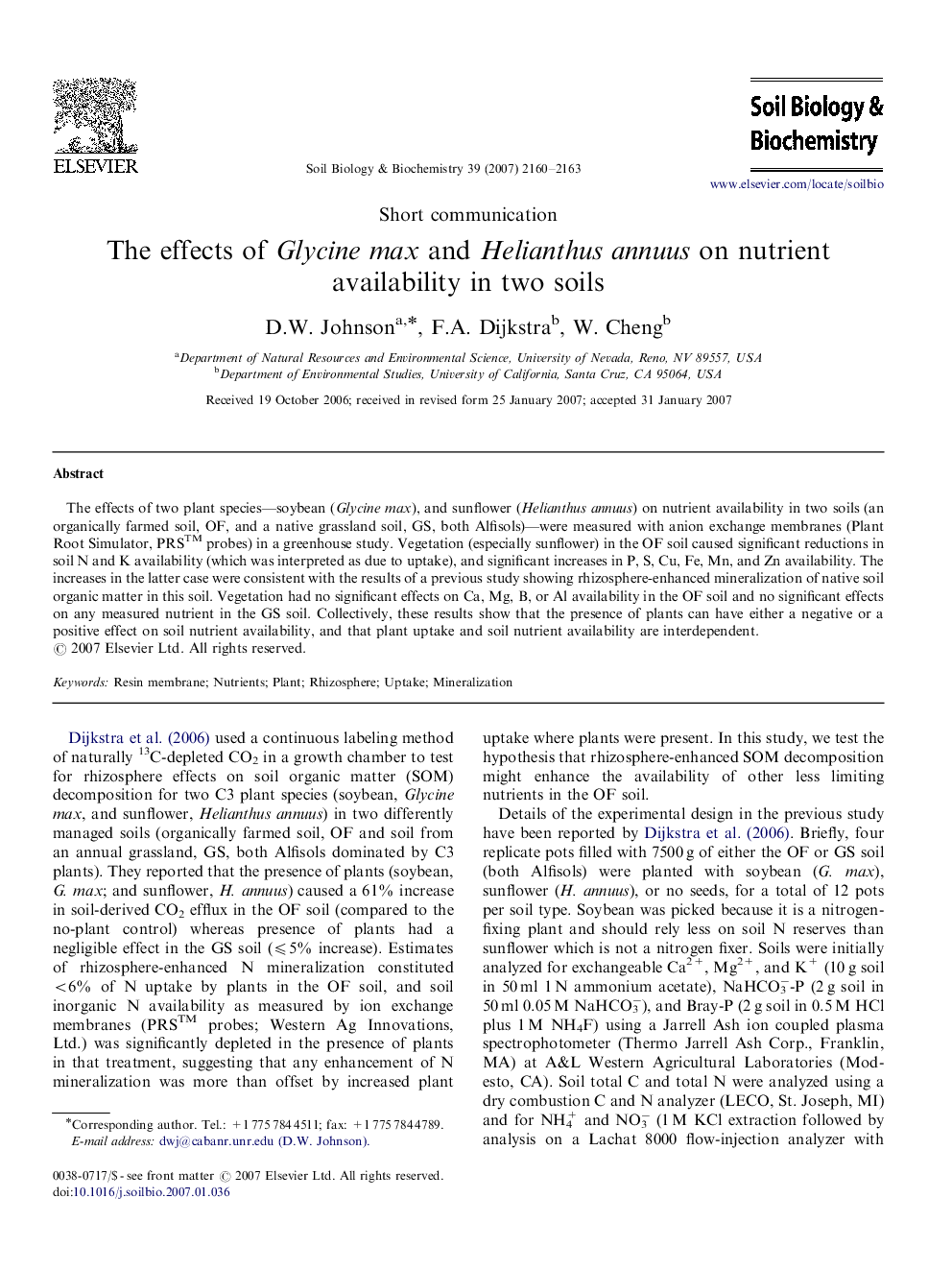| Article ID | Journal | Published Year | Pages | File Type |
|---|---|---|---|---|
| 2026080 | Soil Biology and Biochemistry | 2007 | 4 Pages |
The effects of two plant species—soybean (Glycine max), and sunflower (Helianthus annuus) on nutrient availability in two soils (an organically farmed soil, OF, and a native grassland soil, GS, both Alfisols)—were measured with anion exchange membranes (Plant Root Simulator, PRSTM probes) in a greenhouse study. Vegetation (especially sunflower) in the OF soil caused significant reductions in soil N and K availability (which was interpreted as due to uptake), and significant increases in P, S, Cu, Fe, Mn, and Zn availability. The increases in the latter case were consistent with the results of a previous study showing rhizosphere-enhanced mineralization of native soil organic matter in this soil. Vegetation had no significant effects on Ca, Mg, B, or Al availability in the OF soil and no significant effects on any measured nutrient in the GS soil. Collectively, these results show that the presence of plants can have either a negative or a positive effect on soil nutrient availability, and that plant uptake and soil nutrient availability are interdependent.
